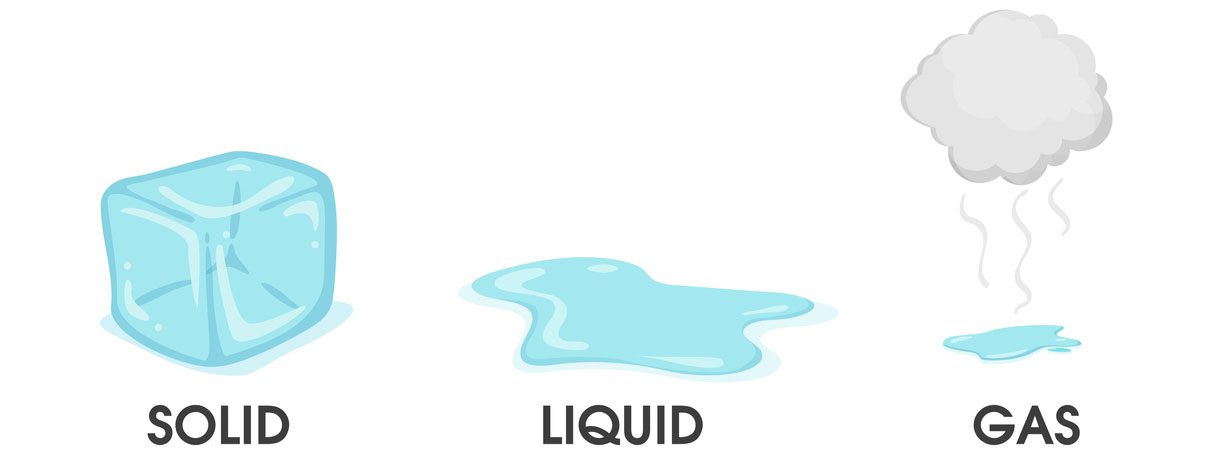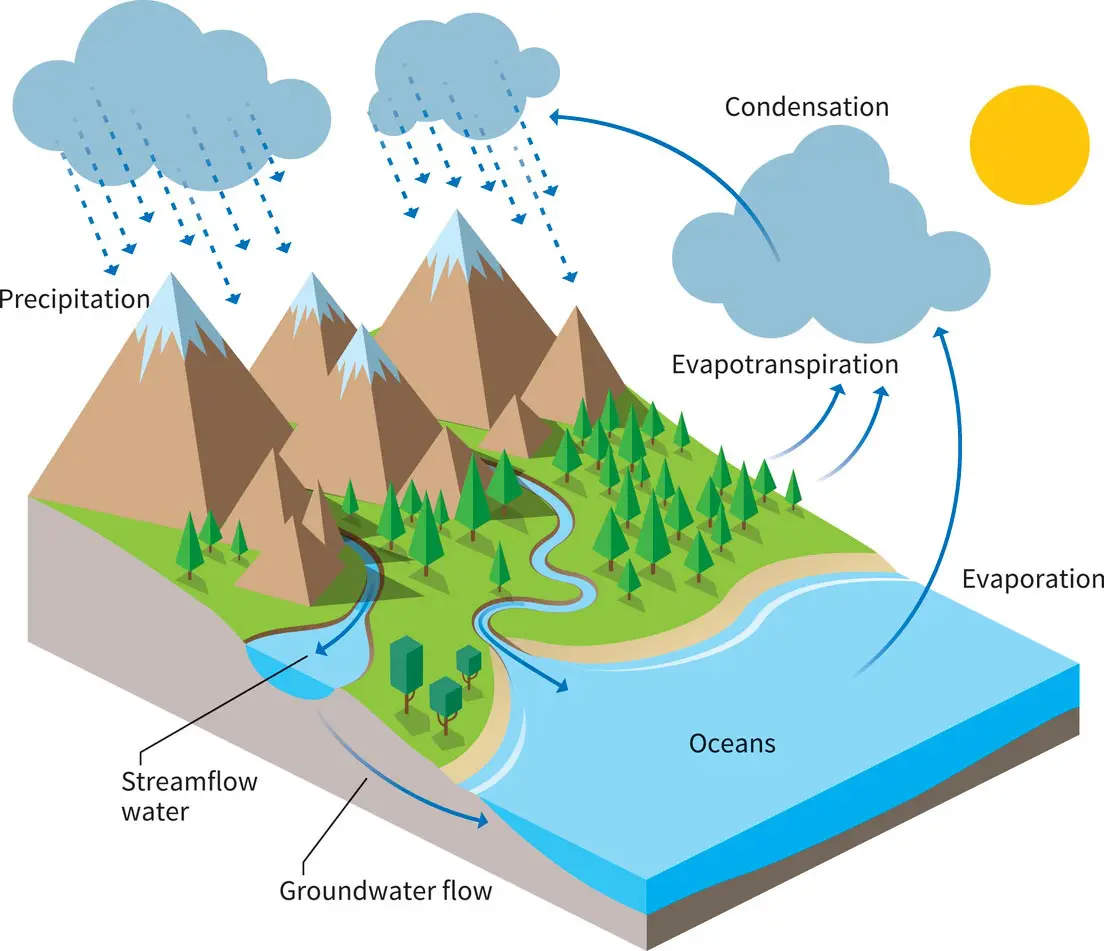Water Cycle
OUR WATER
Water moves from clouds to land and back to the oceans in a never ending cycle. Nature recycles it over and over again. This is called the water cycle or the hydrologic cycle.
Water is the only substance in all of nature that exists in three forms:

How does the water or hydrologic cycle work?
The sun starts the cycle by shining on the water in rivers, lakes, streams and oceans making the water warmer.
EVAPORATION then occurs when this heated water turns into vapor or steam. This water vapor condenses, and goes into the air, becoming tiny droplets in clouds, known as CONDENSATION. These clouds become so full of water that when the temperature is warm, PRECIPITATION in the form of rain starts to fall. Depending upon the temperature, the precipitation may also be in the form of snow, sleet, mist or hail.
Some of the rain falls onto the land becoming run-off that goes into streams and rivers and eventually flowing into local lakes and finally into the ocean, in a process called COLLECTION. Rain will soak or PERCOLATE deep into the ground becoming GROUNDWATER for use by wells, springs or absorbed from the ground by roots of plants or trees.

Precipitation in the form of snow remains on the ground until it melts, turning into water and runs into streams, rivers and lakes. Snow falling on the mountains can turn into ice and sometimes become glaciers if the temperature remains cold for a long time.
Water vapor is also given up into the atmosphere by the process of TRANSPIRATION by which plants after collecting water through their roots release water through their leaves. This helps the plants stay cool, just as perspiration keeps humans and animals cool. Then, the water is heated by the sun and evaporates, and the whole cycle begins again constantly recycling the water. Water moves from the earth to the air to the earth again meaning we are using the same water that was once used by the dinosaurs.
Water moves from clouds to land and back to the oceans in a never ending cycle. Nature recycles it over and over again. This is called the water cycle or the hydrologic cycle.
Water is the only substance in all of nature that exists in three forms:

How does the water or hydrologic cycle work?
The sun starts the cycle by shining on the water in rivers, lakes, streams and oceans making the water warmer.
EVAPORATION then occurs when this heated water turns into vapor or steam. This water vapor condenses, and goes into the air, becoming tiny droplets in clouds, known as CONDENSATION. These clouds become so full of water that when the temperature is warm, PRECIPITATION in the form of rain starts to fall. Depending upon the temperature, the precipitation may also be in the form of snow, sleet, mist or hail.
Some of the rain falls onto the land becoming run-off that goes into streams and rivers and eventually flowing into local lakes and finally into the ocean, in a process called COLLECTION. Rain will soak or PERCOLATE deep into the ground becoming GROUNDWATER for use by wells, springs or absorbed from the ground by roots of plants or trees.

Precipitation in the form of snow remains on the ground until it melts, turning into water and runs into streams, rivers and lakes. Snow falling on the mountains can turn into ice and sometimes become glaciers if the temperature remains cold for a long time.
Water vapor is also given up into the atmosphere by the process of TRANSPIRATION by which plants after collecting water through their roots release water through their leaves. This helps the plants stay cool, just as perspiration keeps humans and animals cool. Then, the water is heated by the sun and evaporates, and the whole cycle begins again constantly recycling the water. Water moves from the earth to the air to the earth again meaning we are using the same water that was once used by the dinosaurs.

Sitemap
Contact Info
Copyright © 2025 North Penn Water Authority • Site: BCG • Privacy Policy


